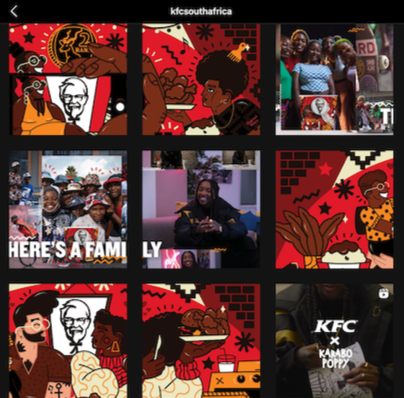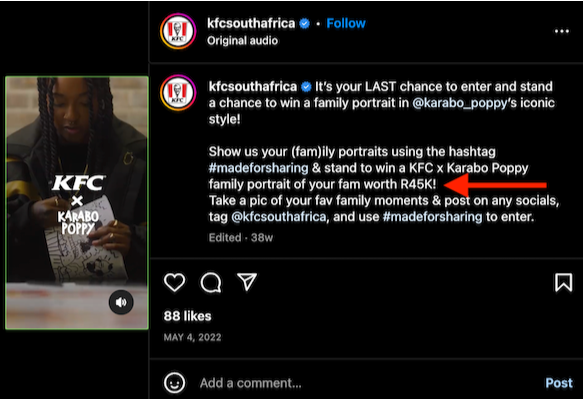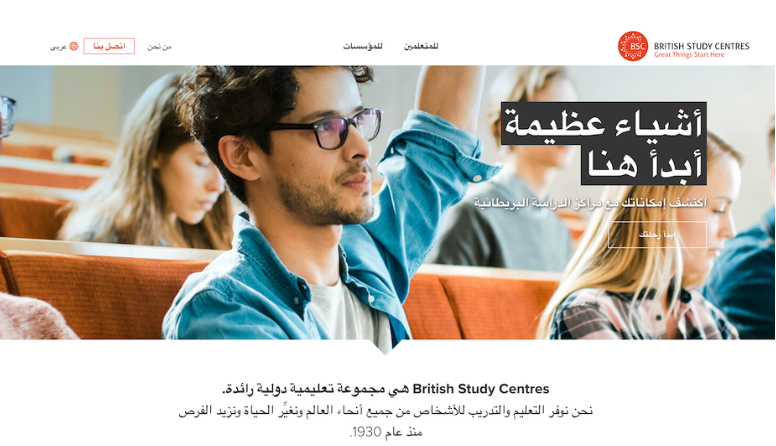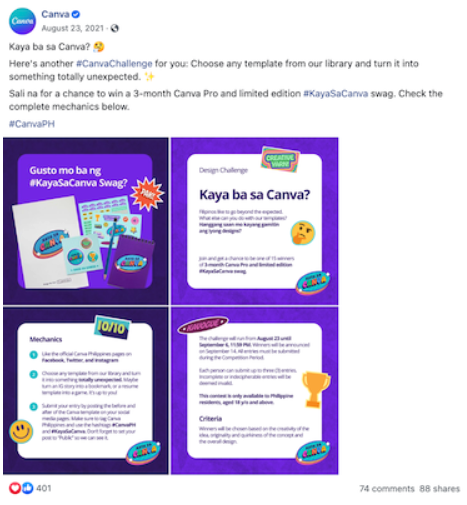Many companies dream of expanding into new markets (both domestic and global). They think that simply getting in front of more potential customers is the key to driving more sales. However, that’s not always true.
In many cases, a business can’t use the same strategy in another locale or country as it does at home. Localization is necessary, especially when it comes to marketing.
What are localized marketing campaigns?
Marketing campaigns are strategic initiatives meant to promote specific company goals. Such goals could include things like boosting attendance for a local event or driving sales of a new product or service. So, localized marketing campaigns are those tailored to a specific locale and culture. How are these campaigns created?
The language in campaign-related assets shouldn’t be just translated into the target audience's language or dialect. It’s adapted or localized based on various characteristics of the local audience:
- Communication style
- Values
- Preferences
- Cultural sensitivities
It also involves matching visuals, currency, date formats, and more to the regional audience you’re targeting.
There’s often a technical aspect to marketing localization as well. Say you have a campaign landing page in a left-to-right (LTR) language like English or Spanish. What if you were to localize into a language like Arabic or Hebrew? You'd need to modify the landing page HTML and CSS to support such right-to-left (RTL) languages.
And there's more if search engine optimization (SEO) is part of your digital marketing team’s strategy. Since keywords can differ across languages and regions, you must do fresh keyword research.
What is the effect of localized marketing?
Localized marketing campaigns accomplish three things:
1. Increasing brand awareness among local consumers. Only 1.5 billion people speak English either natively or as a second language. Translation paves the way to reach the billions of people who speak other languages.
2. Building local communities’ trust in your company. Most consumers won’t feel comfortable doing business with you if they don’t understand your marketing messaging, or if it’s detached from their values and culture. Instead, they’ll question why they should pick you over established local brands.
Ultimately, if you don’t localize your marketing efforts, you could lose 40% of your total addressable market or more.
3. Guiding local consumers through the buyer’s journey toward becoming local customers. It almost always takes multiple marketing touches for someone to become a customer. If you make each touchpoint feel like it was created at a local level, you could accelerate the time to purchase.
7 examples of localized marketing campaigns and why they worked
To show how a company can achieve the above, let’s look at seven real localized marketing examples. They’ll help you brainstorm and execute ideas for your campaigns.
1. World Wide Fund for Nature (WWF)
Every year, WWF promotes the Earth Hour initiative, which has two goals:
- Promoting awareness and accountability for our individual and collective ecological footprint
- Sparking worldwide conversations between individuals, businesses, and
governments about solutions to environmental challenges
Since WWF wants to have a global impact, info about Earth Hour must be available in global languages.
In 2019, WWF used Smartling Translation Cloud to translate event resources on its website into Arabic, Chinese, French, Spanish, and English. This increased the campaign's reach, resulting in over 2 billion impressions across social media platforms. More importantly, it helped WWF rally the 188 countries and territories that participated in Earth Hour that year.
Fast forwarding to 2022, Earth Hour marketing materials, such as print ads and digital banners, were available in eight languages. These localization efforts contributed to an even better turnout for Earth Hour 2022.
Related hashtags received over 10 billion impressions on social media, and Earth Hour trended in 35 countries. In the end, over 190 countries and territories participated.
2. KFC South Africa (SA)
April 2022 saw the launch of a collaborative marketing campaign between KFC and Karabo Poppy, a South African artist and illustrator. The duo created several limited edition buckets and a user-generated content contest for the campaign. (Contest winners were promised custom artworks from Karabo.)
There are a few types of localization to learn from here. One, KFC partnered with a popular local artist, which generated excitement. Two, the art on the limited edition buckets and promotional materials represented South Africa's diversity.

Another nice touch was teasing the value of the custom art that winners would receive. Notice that the currency is the South African Rand, not the US dollar.
Ultimately, this campaign got hundreds of likes across KFC SA’s social media platforms. It even caught the attention of an influencer who got dozens in their audience to enter the contest.

Between KFC and Karabo’s promotion and the user-generated content created for it, the campaign had massive reach and generated many returning and new customers.
3. InterContinental Hotels Group (IHG)
In 2012, IHG launched HUALUXE™ Hotels and Resorts. It was the “first upscale, international hotel brand designed specifically for the Chinese traveler.” Everything was localized from the in-person experience to the brand name, which translates from Hua (meaning majestic China) and luxe (meaning luxury). The marketing campaign promoting the launch was also tailor-made for the Chinese market. Consider the video “A guest journey through HUALUXE™ Hotels and Resorts.” The captions, which walk viewers through each aspect of the guest experience, are in English and Chinese.

And the wording and visuals reflect what IHG pegged as the top four values of Chinese travelers staying at an upscale hotel:
- Tradition
- Rejuvenation
- Status
- Familiar spaces
For example, the snapshot below speaks to both tradition and status by mentioning the authentic tea service.

This launch and marketing campaign was successful in the short term. Moreover, they were part of larger efforts to prepare for projected growth in China’s hotel market by 2015.
Smartling later helped IHG take advantage of that growth by accelerating the release of local language content. The combination of HUALUXE™’s brand identity and the localized content used to promote it helped IHG outpace all competitors in Greater China in 2015.
4. BSC Education
This next example was shared with us courtesy of Derrick Kwa, Paid Media Manager at Pink Orange Media. Derrick’s team was working with BSC Education, which targets international students who want to study in the UK and need English language courses.
After running what turned out to be a low-converting English campaign, Pink Orange tested a localized one. Derrick explained, “The test was done in Saudi Arabia (with Arabic as the target language) because it was one of the biggest markets from which BSC got their students historically.”
While the campaign’s messaging stayed mostly the same, translation was a big part of the project. Adjusting landing pages and marketing materials was also key, although, according to Derrick, that “was the biggest challenge from a technical standpoint because Arabic is a right-to-left language.” Challenges aside, the team overcame and delivered localized landing pages, ad creative, and an email follow-up sequence.

What were the results? “We saw a 2.5x increase in conversion rate and a 43.2% drop in cost-per-lead,” Derrick said. “The leads were also more engaged, with the localized marketing emails having a 9.4% increase in open rate and a 10% increase in click-through rate.”
5. IMVU
After a noticeable increase in users from South Korea, IMVU—a popular avatar-based social network—sprung into action. Previously, the app was only available in English. Yet, for Korean users to enjoy the IMVU experience fully, it needed to be available in Korean and localized to the culture.
To prepare for the launch of the Korean app, IMVU leveraged Smartling’s translation management system, web proxy, and language services. In less than a month, the company turned around accurate translations for over 20,000 words.
As detailed by Lomit Patel, former Vice President of Growth at IMVU, the next stage was a soft launch. This allowed for user research and app fixes before the launch of the official localized marketing campaign to promote the app.
In just two months, IMVU’s localized creative and product experience increased Android app registrations by 43% and iOS registrations by 45%.
6. Nike
While localization by country is common for global brands like Nike, it’s not the only way. The “Own the Floor” campaign shows that you can also tailor marketing for different locales within a country. One of the short films was geared toward New Yorkers but perhaps not in the way you’d expect.
In a Director’s Notes interview, the director, Ben Dean, described the intent behind the video. Ben said, “I wanted to capture the grit, energy, and charm of the city but in locations that feel a bit more unexpected and show NYC in a way that we don’t always typically see. Yet also featuring locations that feel relatable when it comes to zoning out and being able to express yourself during a crazy chaotic NYC day.”
This film didn’t conform to the typical portrayal of New York City with shots of the Statue of Liberty or Times Square. Those aren't necessarily representative of the everyday experiences of New Yorkers. By showcasing unexpected and typically mundane locations, Nike accomplished two things:
- It placed the message—freedom of expression—front and center.
- The video had a raw and authentic feel that resonated with current and potential NYC-based customers.
Nike took similar approaches to other creative content for this campaign, including those localized to London.
7. Canva
“Kaya Sa Canva” is yet another great example of a localized marketing campaign. Its goal was to encourage the company’s Filipino users to explore Canva’s massive library of free design templates and empower them to create. Canva Philippines created and promoted a limited-time design challenge across its social media channels. This Facebook post alone garnered 401 reactions, and close to 100 comments and shares each.

Other posts—all of which were in a mix of Filipino and English—performed similarly.
Canva is no stranger to the benefits of localization. It undertook these efforts early in the company’s history, leveraging local design teams and Smartling’s CAT tool to reach 30 million non-English-speaking users.
Implementing a localized marketing strategy: How it’s done
You’ve seen various methods of execution via the above campaign examples. Now, let’s get into how you can do something similar for your company.
1. Research the local market
As with any localization strategy, developing one for marketing specifically starts with research. This involves seeking to understand both audience and competitor-related details. These include various factors:
- Demographic info such as age range, income range, etc.
- Nuances of the target language like relevant dialects and rules relating to formality
- What the culture is like and what resulting values, opinions, and preferences local consumers have
- How the audience’s pain points, goals, desires, fears, and use cases differ from your core audience
- Buying behaviors (and emerging behavioral trends)
- The current competitive landscape in the market you plan to localize for
- How potential customers view and interact with solutions or brands like yours
What’s one of the most reliable ways to gather and verify this info? Work with local experts and native speakers of your target language (like our carefully-vetted professional translators). It spares you from having to learn all this from scratch and results in a better user experience for your target market.
2. Localize, localize, localize everything
From the first to the last touchpoint, put your local knowledge to work. You may need to do any or all of the following:
- Translate and localize campaign-related copy and content such as landing pages, ads, emails, and social media posts
- Localize graphics, pictures, videos, and other visual assets
- Make user interface adjustments on your website (e.g. switching to a RTL language)
- Localize pricing, date, time, and number formats, etc.
- Ensure compliance with local legal requirements
Yet, these tasks can be time-consuming and expensive when done manually. This is where Smartling’s language services and Global Delivery Network (GDN) can take a load off.
Our translators are native speakers and deliver quality translations within 48 hours—100% translation quality guaranteed. With their help, you can easily save up to 30% in translation costs. The GDN, on the other hand, automatically ingests content from your site, landing page, or web experience into Smartling for translation. It then delivers an SEO-friendly, localized version instantly whenever a site visitor requests it.
3. Promote your campaign
For your localization efforts to pay off, your marketing campaigns must be seen by the right people. Increasing their visibility may involve promoting on social media channels where a regional audience is most active or bidding on high purchase-intent keywords for your search ads, for example.
If you’re doing search engine optimization, it will also involve selecting appropriate keywords. Here again, Smartling can help as our Global Delivery Network is SEO-compatible. It translates URLs and keywords and can display localized content on subdomains, subdirectories, and more. Regional SEO is one less thing you have to worry about!
For more personalized insights into how Smartling can help you localize your next marketing campaign with ease, schedule a chat with one of our experts.
%20052925%20-%20AI%20Translation%20101%20(1).png)
.jpg)